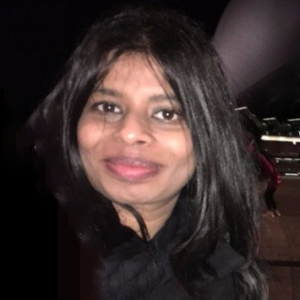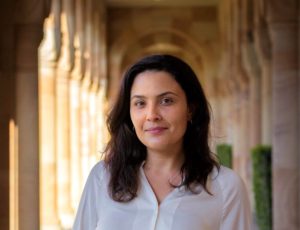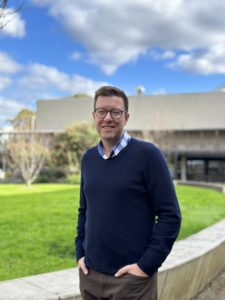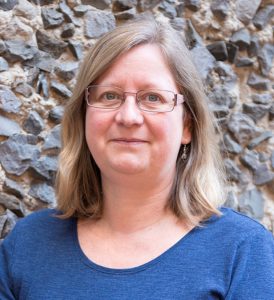Meet some of the authors of the runner-up paper
Evaluation of techniques used for visualisation of hydrogel morphology and determination of pore size distributions
Imanda Jayawardena, Petri Turunen, Bruna Cambraia Garms, Alan Rowan, Simon Corrie and Lisbeth Grøndahl
 |
Imanda is a Marie Skłodowska-Curie Actions – Science Foundation Ireland Research Fellow at the Irish Photonics Integration Centre (IPIC). Her current research focuses on developing a bone-on-a-chip device for longitudinal osteogenesis monitoring using non-invasive, label-free, non-ionising spectroscopic techniques. Imanda’s areas of research interests include, biomaterials, biophotonics, biophysics, physical chemistry, biomedical engineering, medical devices and the broader field of health and medicine. She has prior research experience in immunochemistry, microscopic techniques, mass spectroscopy assisted proteomics, and working with hydroxyapatite nanoparticles. Imanda is also a fellow of the Higher Education Academy (HEA) owing to her contributions towards university-level teaching. |
 |
Dr. Bruna Cambraia Garms is a biomaterial scientist specializing in polymeric platforms for drug release systems, medical device design, and cell-material interactions. She completed her PhD at the University of Queensland, Brisbane, where she investigated new hydrogels for cancer research. Currently, as a Research Fellow in the Department of Materials Science and Engineering at Monash University, Australia, Dr. Garms works on a device for cardiac solutions. Dr Garms’ research interests lie in biomaterials engineering with projects aimed at addressing critical medical challenges. |
 |
Simon Corrie completed his undergraduate degree in Chemical Engineering and PhD in Physical Chemistry at the University of Queensland, before undertaking postdoctoral studies at the HPV Research Laboratory at the University of Washington, Seattle (Merck Company Foundation Fellowship). After returning to Australia to develop microneedle arrays for wearable immunoassays (Smart Futures Fellowship; ARC DECRA), he joined the Chemical and Biological Engineering Department at Monash University in 2016 to establish the Nanosensor Engineering Lab. His research interests lie in developing nano-particles and proteins for applications in bio-sensing and bio-assays with application in biomedicine and agriculture. |
 |
Lisbeth Grøndahl obtained her PhD in chemistry from the University of Copenhagen, Denmark and now holds a position as Professor in the School of Chemistry and Molecular Biosciences at the University of Queensland, Australia. She is a Fellow of Biomaterials Science and Engineering and works in the interdisciplinary field of biomaterials science with a focus on development of approaches to create and comprehensively characterise functional polymeric biomaterials in the form of membranes, scaffolds, hydrogels, and nanoparticles. In 2018 she was highlighted as one of 16 women at the forefront of biointerface science research by the international journal Biointerphases. |
What aspect of your work are you most excited about at the moment?
Petri Turunen: I am excited of working with array of advanced microscopy techniques at my disposal to support research on biomolecular and synthetic systems.
Lisbeth Grøndahl: Providing detailed guidance on material characterisation, since that allows reproducible and impactful work to be generated, not just by my research team, but more broadly.
How do you feel about Materials Advances as a place to publish research on this topic?
Petri Turunen: I think Materials Advances is a great journal to publish materials research.
Lisbeth Grøndahl: Materials Advances provides an excellent forum for publication of research into material characterisation and setting standards and communicating sound protocols.
Can you share one piece of career-related advice for early career scientists?
Petri Turunen: My advice would be not to be afraid to do lateral career moves and there are more and more alternative career paths in science for example in core facilities.
Lisbeth Grøndahl: It is through detailed evaluation of material properties that you will make ground-breaking discoveries that will have a long-lasting legacy.














